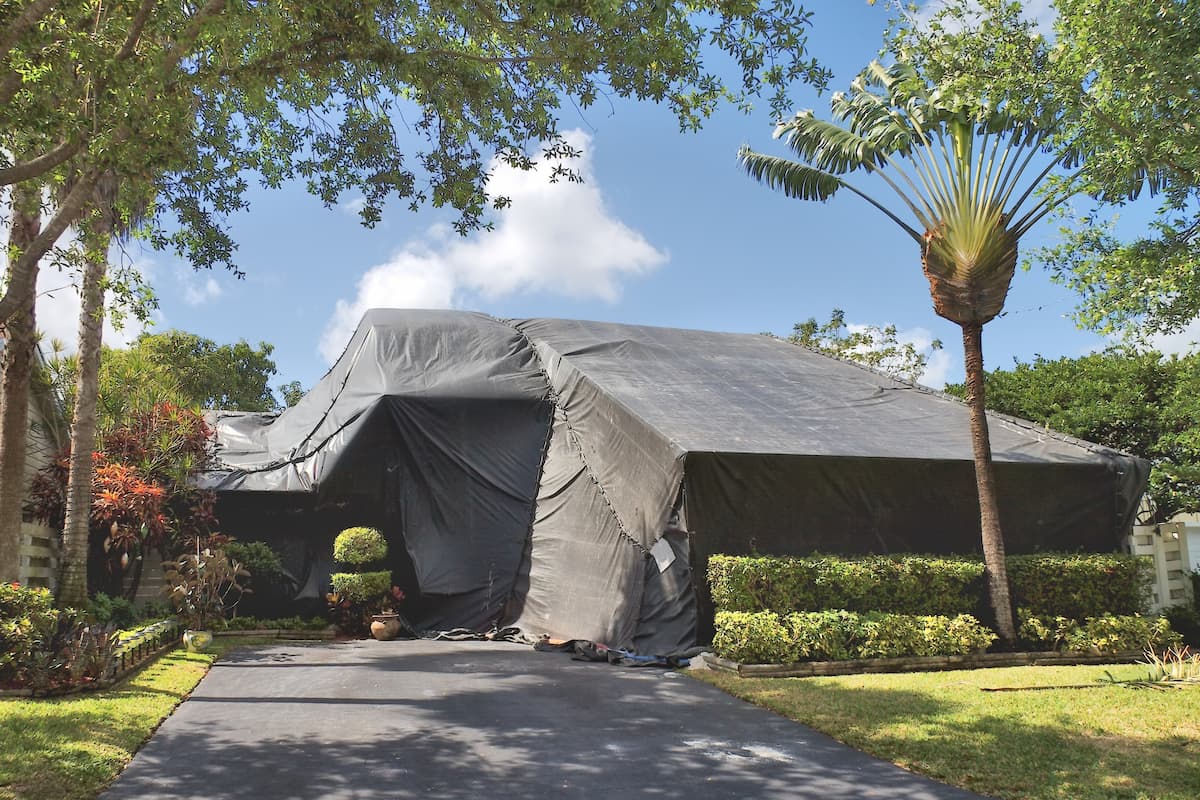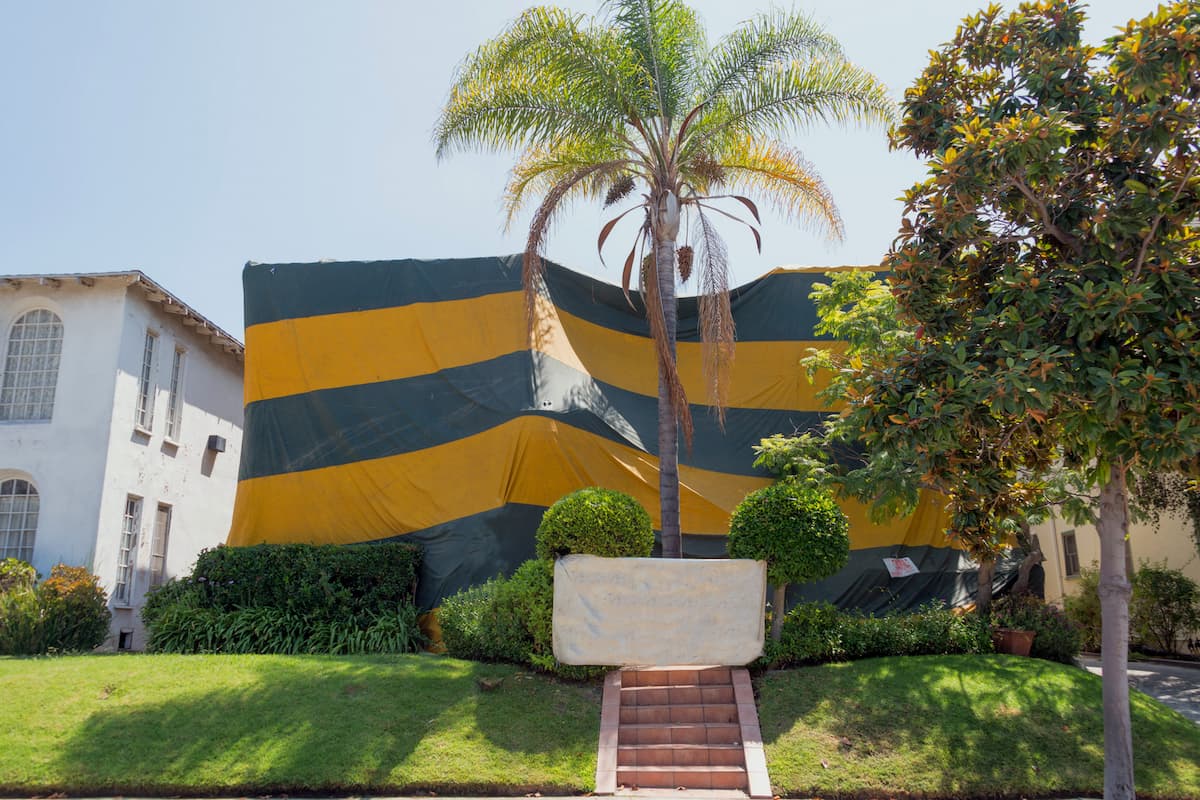How Often Should You Tent For Termites In California?
Anyone who lives in a warm, sunny state is probably already aware of the importance of tenting for termites as a method of fumigation.
But how often should you tent for termites in California? The fact is, staying on top of this task is critical.
Tenting for termites only needs to be done when you have an active infestation that can’t be dealt with by any other means. However, it’s also important to inspect your property for termites annually, as this will minimize the amount of time during which they can damage the structure of your home.
In this article, we will explore the benefits of tenting, and how often you need to tent a property in California.
Why Do You Tent For Termites?

There are several reasons that people use tenting fumigation to get rid of termites, as it has been an effective way to kill off termite colonies for decades.
While this method does have its drawbacks, there are also significant advantages, including:
- You can kill off termites in difficult-to-reach areas without having to tear down walls, rip up flooring, or damage your ceilings.
- Tenting is an effective way to reach all of the termites in your home, not just a few.
- It eliminates multiple kinds of pests, not just termites.
- Tenting impacts every part of the house, so you’ll know you’ve gotten rid of all of the colonies, rather than addressing only localized areas and having them become reinfested from other spots.
All of these reasons are why tenting can help eradicate a termite infestation that has gotten out of hand.
If you’ve never witnessed tenting before, it involves (as the name suggests) the act of putting a giant tent over the entire property, and filling the space with a toxic gas.
The tent holds the gas in and prevents it from dispersing into the atmosphere, while ensuring that any pests trapped inside the enclosed area are killed.
Tenting can be an effective method for removing termites, which is why it has remained popular for so many years.
Of course, tenting has many disadvantages as well, including the fact that you, your family, and your pets (if you have any) must all leave the house. You also need to remove all food and other consumables. This process can be expensive.
Tenting is not an ideal solution, but if you have a bad enough termite infestation that’s especially difficult to reach, it may be your best option.
How Often Should Tenting Take Place?
Some people believe that tenting needs to be done yearly in order to effectively kill off termite infestations, before they become established and start damaging the home.
However, this is not necessarily the case, as you really should not be tenting your home annually.
Tenting is an expensive process, and involves relocating your entire household for several days. Many people also dislike the idea of using toxins inside their homes, even though the levels must be tested and confirmed to be safe before you can return.
In reality, tenting only needs to be done when there is an actual situation that requires this type of attentiont, not on a set schedule.
This method should only be used when an established termite colony has reached a part of the home that is too difficult to access in other ways.
Tenting allows the termites to be eliminated without the need to rip apart the fabric of the house. However, there is no need for this approach unless there is a known colony in the home, and a trained expert has stated that this is the best course of action.
Instead of annual tenting, it’s best to ensure that your home is inspected every year to check for the presence of termites, and base your follow-up steps on the findings of these reports.
However, if there are no termites found inside your house, you don’t need to resort to tenting, and you can therefore avoid the associated expense and potential risks of exposure to toxins.
Are There Alternatives To Tenting?

Yes, a few effective alternatives to tenting have emerged, although they are not necessarily superior to tenting.
If you’re weighing your options for treating a termite problem, it’s best to seek the advice of an expertons, rather than picking one at random on your own.
In some cases tenting makes the most sense, and in other cases, a more localized treatment option is the best course of action. It really depends on the location and severity of your infestation, as well as the type of property you have.
A professional expert should be able to advise you whether your home needs tenting or there are other options for you to explore. It may also be worth getting a few different opinions so you can be sure that you take the best approach for your home.
What Types Of Situations Commonly Require Tenting?
There are a few situations in which tenting is considered to be the best way to deal with a termite infestation. Recognizing the differences between these scenarios can help you decide whether tenting is the right choice for you.
First of all, tenting is most useful when the termite colony in your home is inaccessible.
If you’re not able to get near the colony, there are extermination methods that may reduce the number of termites and slow down the spread of your infestation, but they won’t always necessarily provide an actual solution to the problem. In this type of case, tenting is the best option.
Secondly, if there are multiple points of infestation, tenting may also be the most cost-effective solution because it will address all of the problem areas at once.
Drywood termites will spread throughout the home and may even create multiple infestations, especially if they have been living there property for several years.
In these types of cases, getting rid of them is accomplished most effectively through tenting because it will kill off all of the infestations at once and prevent them from spreading around the property.
A third situation in which tenting is generally useful is when the termite infestation has gotten inside your wooden flooring.
Wooden floors are often made thin and brittle by termites, in which case other treatment methods would be unsuitable because there isn’t enough surface area for the treatments to be applied.
There may also be multiple layers of flooring through which the treatment needs to penetrate, which may not be possible.
In such cases, tenting guarantees the extermination of all termites in the flooring, and there is no need to have thick enough wood into which to squirt the liquid (or another treatment material) because the tenting treatment consists of a gas.
Similarly, if the termite infestation is in your attic, it can also be very difficult to treat it effectively using other methods, especially if you have plumbing or electric running through that area.
Conclusion
You should only tent for termites when a professional has determined that you have an infestation, and that the infestation can not be eradicated through other methods of extermination.
It is not advised to tent your home on a regular basis as a preventative measure, as this can be costly, presents potential risks, and will not necessarily prevent future infestations from occurring.
